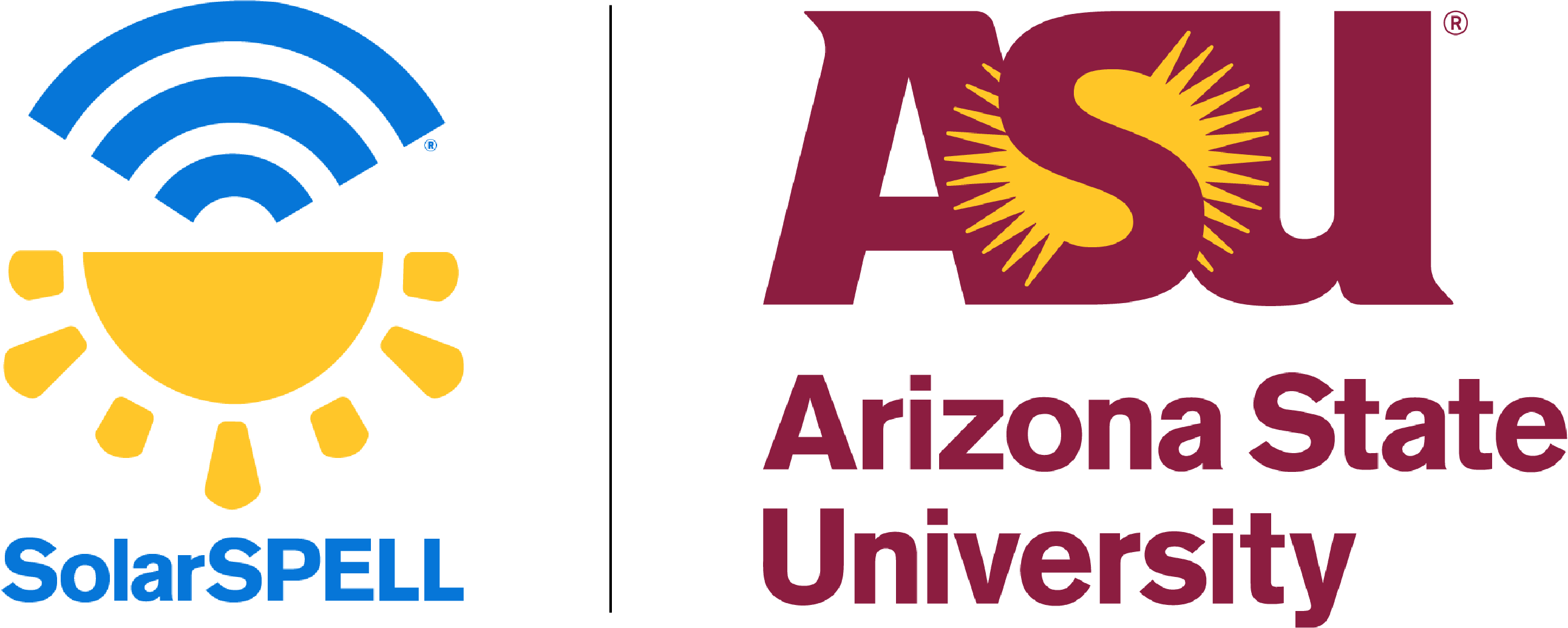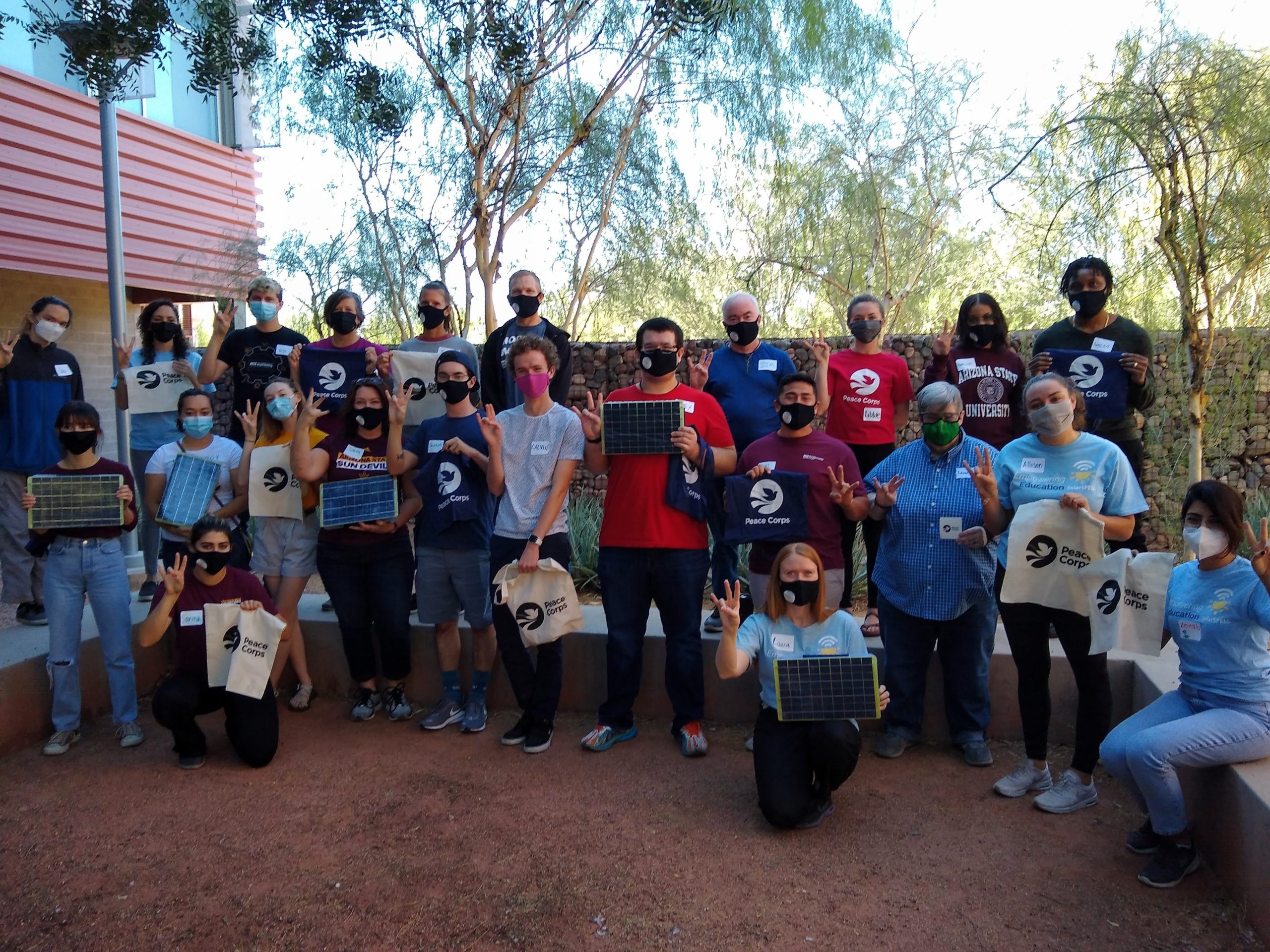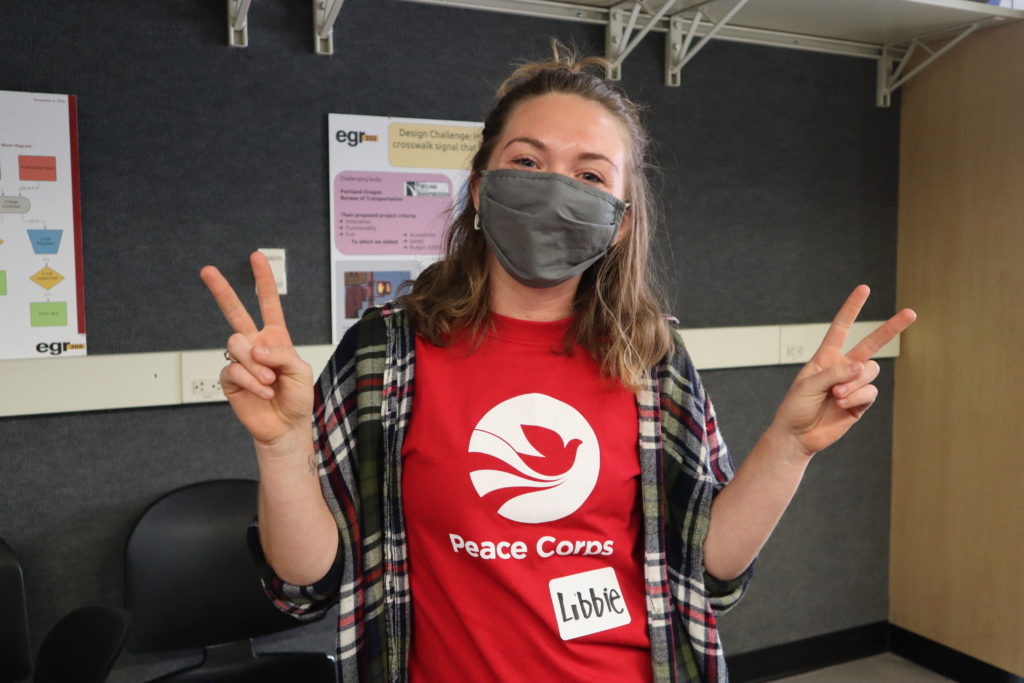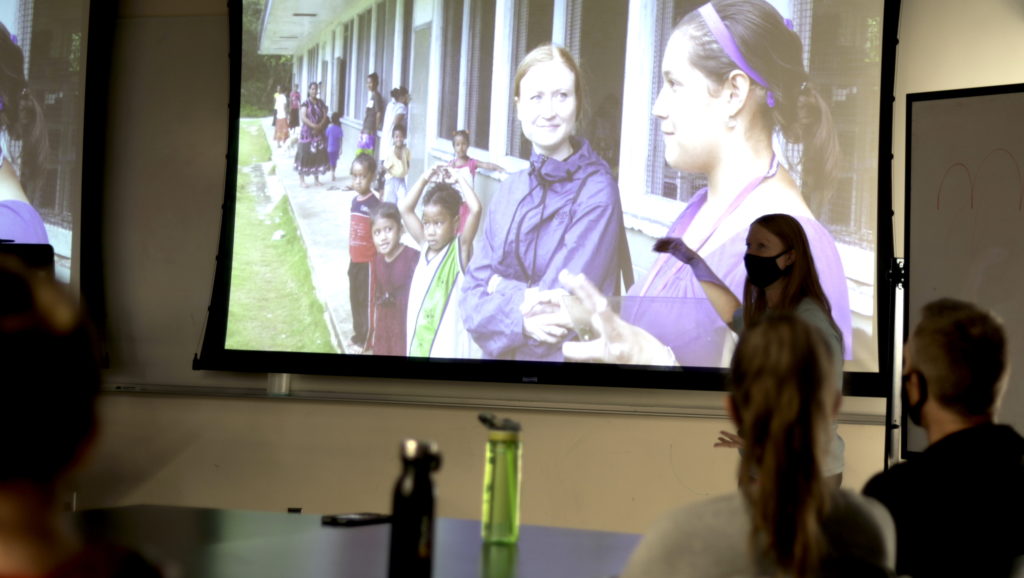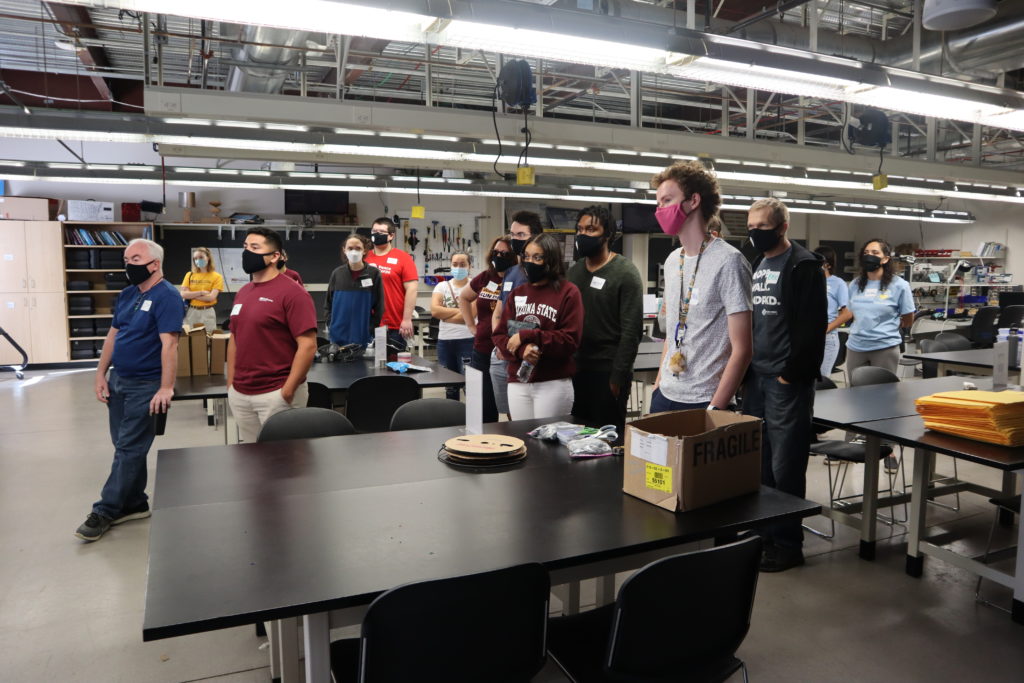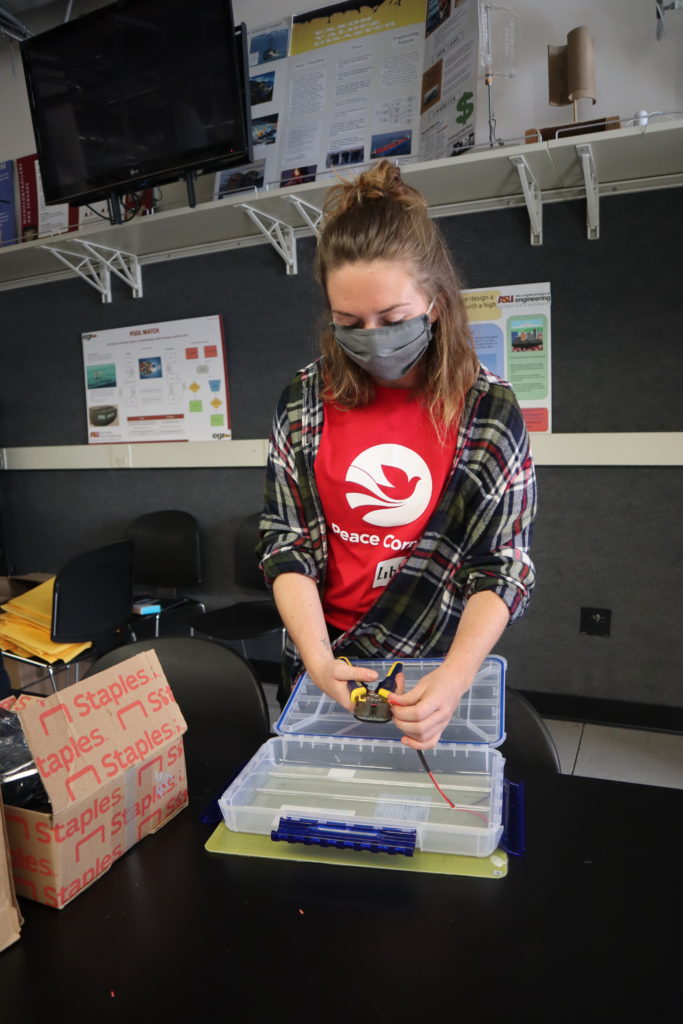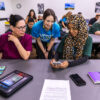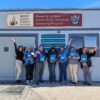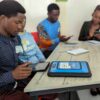By Libbie Farrell
Each semester, the SolarSPELL team hosts a Build Day, which includes ASU students and community members of the Phoenix metro area coming together to assemble SolarSPELL offline digital libraries. Along with providing hands-on assistance in building the libraries that will be sent to partner organizations around the world, these Build Days also serve as an opportunity for volunteers to deepen their understanding of information literacy and its role in empowering learners globally.
On November 6th, 2021, approximately 20 Build Day volunteers took their seats at work benches in an engineering classroom at the ASU Polytechnic campus as Dr. Laura Hosman (SolarSPELL Co-Founder and Co-Director) made her way to the front of the room and began a presentation that would outline the inspiration, conception, and growth of the SolarSPELL initiative. Throughout her initial address to the volunteers, it became increasingly clear that the current iteration of the offline library (one that is small, manageable, powerful, and easy-to-use) is a far shot from the original bulky solar computer lab in a box that was shipped to the other side of the world, to the Federated States of Micronesia, equipped with (1) a handful of laptops and (2) a lot of hope for the future of education. Unfortunately, hope can only go so far and although the team desired to make holistic, meaningful change in the communities in which they serve, the SolarSPELL team had unintentionally fallen into the development ‘drop-and-go’ trap of technological implementation due to logistical complications with the delivery of the original design. The unit was delivered on the last day of the SolarSPELL team’s stay in FSM during which they were at a conference at the capital. In other words, nobody was in the community to train and familiarize the teachers and educational personnel with the technology.
A year after the solar computer lab in a box was delivered to the Federated States of Micronesia, Dr. Hosman and a handful of other SolarSPELL affiliates would return to see what kind of progress was being made only to find the technology pushed to the side of classrooms, not having been touched since the initial installation. It was clear that something had to change – namely the process of training and supporting educators and host-country partners. At the same time Dr. Hosman and the team were absorbing the lessons learned from their unsuccessful implementation attempt, a Peace Corps Volunteer (PCV), Melody, serving in the education sector and posted merely one island away, heard about the SolarSPELL venture that aimed to bring digital literacy education to offline communities just like her own.
With the awareness that their training and development strategies must be improved, but uncertain about how to develop long-term sustainable means of training, Melody represented the first step on a path towards a future sustainable implementation. This pivotal moment in the SolarSPELL evolution eventually led to a full-time partnership with the United States’ Peace Corps: this relationship has proven to be symbiotic in nature as PCVs provide training to counterparts on how SolarSPELL works while SolarSPELL provides localized, digital content to volunteers and communities across sectors. This strong partnership between Peace Corps and SolarSPELL continues to grow and the strength of the relationship can be seen at events such as Build Day. This brings us back to the most recent Build Day, in which the majority of the volunteers had some Peace Corps connection, whether as a returned volunteer, prospective volunteer/Peace Corps Prep student, or a SolarSPELL student intern working on Peace Corps-related projects.
As Dr. Hosman came to the end of her reflective presentation, she opened up the floor to engage the group of Build Day volunteers to consider the role that technological literacy has had on their own lives. She challenged us all to consider what our lives would be like if we did not have information literacy as a tool – one that we tend to take for granted. This powerful exercise of imagining a life without technological literacy encourages us to cultivate a greater appreciation for the characteristics of agency and confidence that basic information literacy instills in people of all ages within our society. It became increasingly clear throughout this conversation that access to technology and meaningful training establishes healthy relationships with information – this should be a fundamental right for all humans as it allows individuals and societies to flourish. Without access and training, systematic inequalities that affect millions of people around the world become a greater concern, and they must be tackled.
Assembling the 50 SolarSPELL offline digital libraries on this Build Day was one step on the path towards tackling the complex concern of information inequity. Together, as a SolarSPELL-Peace Corps team equipped with glue guns, drills, Raspberry Pi microcomputers, and solar panels, volunteers stationed themselves in the classroom on ASU Polytechnic campus and learned the entire process of how to physically construct the SolarSPELL units. From prepping the waterproof cases and soldering wires together, to laminating instructional pamphlets and securing on the solar panels, not only were the Build Day volunteers instrumental in the process of construction but, just like previous cohorts of volunteers, they also provided keen insight on how to optimize future operations. As Build Day came to a close, the group of volunteers came together to reflect upon the process. As the team gazed upon the stack of completed digital libraries, there was palpable excitement about all that was accomplished that day as well as the opportunities for information and technological literacy in the future of reducing global inequalities.
Having served as a Peace Corps volunteer (PCV) myself in Timor-Leste from 2019-2020, it has been such a pleasure working with an organization that prioritizes hands-on engagement from the ground up. In fact, participating in Build Day brought back memories of my time in Timor, when I would jump in the back of a pick-up truck with other women, men and children in my community so that we could work together towards a common goal of bringing clean water to all local households. In the same way, walking into that engineering classroom with other members of the Peace Corps community, whether that be other RPCVs, Peace Corps Prep students, or members of the SolarSPELL initiative, I was reminded of the profound impacts that can be had when individuals who hold similar values come together to consciously and compassionately better the world, and better each other.
**Funding in support of this SolarSPELL Build Day came from the Experimental Humanities Collaborative Network.
